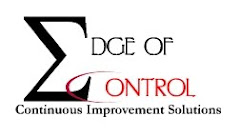How do you value your product? Is it a fixed value or a variable value?
This IS a different question that saying how do you cost your product. It also gets at the question of what comes first, the chicken (cost) or the egg (value)?
Value is a more ephemeral than cost and can be broken down into 2 types of value - the value it brings to the business and the value it gives the customer. Cost is a measure of the transformations that occur to the product on its way from conception to eventual destruction (though this is often shortened to the cost up to when the customer takes possession of it).
If the cost exceeds the value, then a business needs to consider continuing production. If the value exceeds the cost, then the business should be making a profit. Tying these two together is the price.
Back to the chicken and the egg and price. And this is where sales, marketing and manufacturing can be at loggerheads. Does the price reflect the cost (chicken) or the value (egg) and which is the constraint? Therefore, which does a company work on when the cost exceeds the value? Smart answer is both (cost and value), the easy answer is cost and the tricky answer is value. Manufacturing is told to reduce cost, sales and marketing are told to increase perception of value. Both sides of the organization though need to look at what value they are adding and how to transform that into an actual value for the customer and not just a perceived value.
Fundamental to all approaches to make value more than the cost is that proper understanding of the values and costs of the transformation process. Value Stream Mapping (VSM) and Value Stream Analysis (VSA) attempt to capture the value and highlight areas of cost. It is more than just showing all the steps, from order placement to order fulfillment, it is about highlighting time, effort and waste streams.
It can highlight areas were low value steps can either be eliminated or modified to become high value. Sometimes this is by speeding up the process, smaller lot sized, exchanging a raw material for another or by finding a different use for the waste (think whey, was a waste now a premium item in health food stores!)
Value is variable, though price may not. Cost is merely a reflection of the value someone else places on for their own product or service. What would your process look like if you focused on increasing value throughout your processes and merely used cost to measure that success?
Monday, April 19, 2010
Subscribe to:
Posts (Atom)




